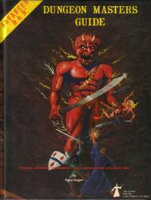Example room generation: var cornerTile = "<a href="https://s3.amazonaws.com/files.d20.io/images/2766641/BQFOkdBneZUFnQUkFORrsA/thumb.jpg?1389918058" rel="nofollow">https://s3.amazonaws.com/files.d20.io/images/2766641/BQFOkdBneZUFnQUkFORrsA/thumb.jpg?1389918058</a>"; var roomArrays = [ {roomType: "fourBYfour", srcImg: cornerTile, hFlip: true, vFlip: false, padLeft: 0, padTop: 0 }, {roomType: "fourBYfour", srcImg: cornerTile, hFlip: false, vFlip: false, padLeft: 140, padTop: 0 }, {roomType: "fourBYfour", srcImg: cornerTile, hFlip: true, vFlip: true, padLeft: 0, padTop: 140 }, {roomType: "fourBYfour", srcImg: cornerTile, hFlip: false, vFlip: true, padLeft: 140, padTop: 140 }, {roomType: "sixBYsix", srcImg: cornerTile, hFlip: true, vFlip: false, padLeft: 0, padTop: 0 }, {roomType: "sixBYsix", srcImg: cornerTile, hFlip: false, vFlip: false, padLeft: 280, padTop: 0 }, {roomType: "sixBYsix", srcImg: cornerTile, hFlip: true, vFlip: true, padLeft: 0, padTop: 280 }, {roomType: "sixBYsix", srcImg: cornerTile, hFlip: false, vFlip: true, padLeft: 280, padTop: 280 }, {roomType: "sixBYfour", srcImg: cornerTile, hFlip: true, vFlip: false, padLeft: 0, padTop: 0 }, {roomType: "sixBYfour", srcImg: cornerTile, hFlip: false, vFlip: false, padLeft: 280, padTop: 0 }, {roomType: "sixBYfour", srcImg: cornerTile, hFlip: true, vFlip: true, padLeft: 0, padTop: 140 }, {roomType: "sixBYfour", srcImg: cornerTile, hFlip: false, vFlip: true, padLeft: 280, padTop: 140 }, ]; The units are 70x70 squares... so "fourBYfour" = four 70px squares by four 70px square.. you just define the library of rooms the generator can select from. You call a room into existence with: buildRoom(0,0,"fourBYfour"); Where the zeros are the x and y for the map in squares starting with 0,0 being the top left square. The function is as follows. buildRoom = function(leftValue, topValue, roomType) { var lv = (leftValue * 70) + 140; var tv = (topValue * 70) + 140; _.each(roomArrays, function(indexRooms) { if(indexRooms.roomType == roomType){ createObj("graphic", {_type: "graphic",_subtype: "token", _pageid: pageId, layer: "map", width: 280, height: 280, left: lv + indexRooms.padLeft, top: tv + indexRooms.padTop, imgsrc: indexRooms.srcImg, flipv: indexRooms.vFlip, fliph: indexRooms.hFlip, }); }; }); };










